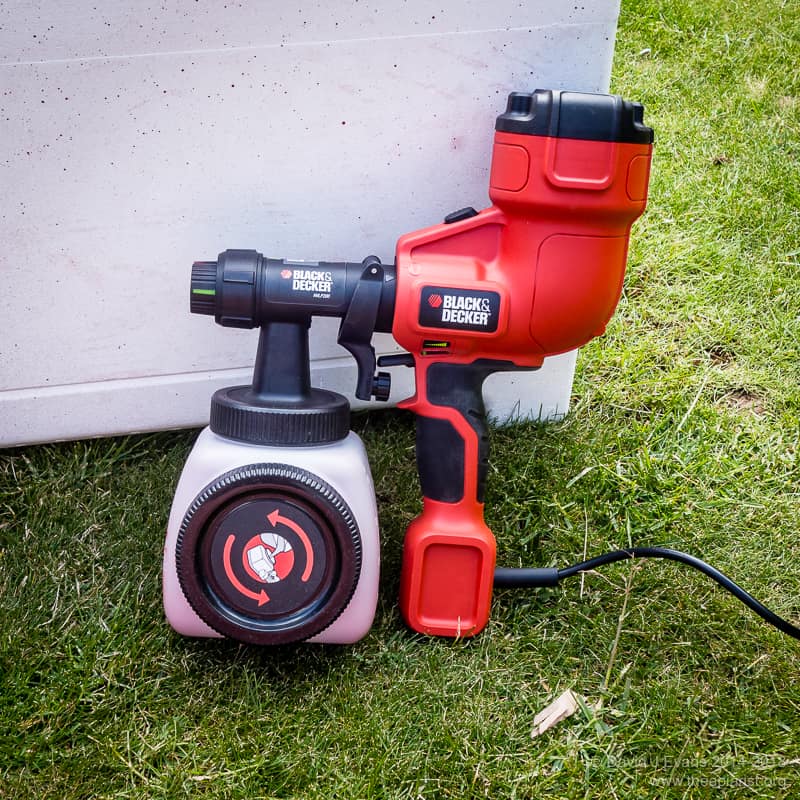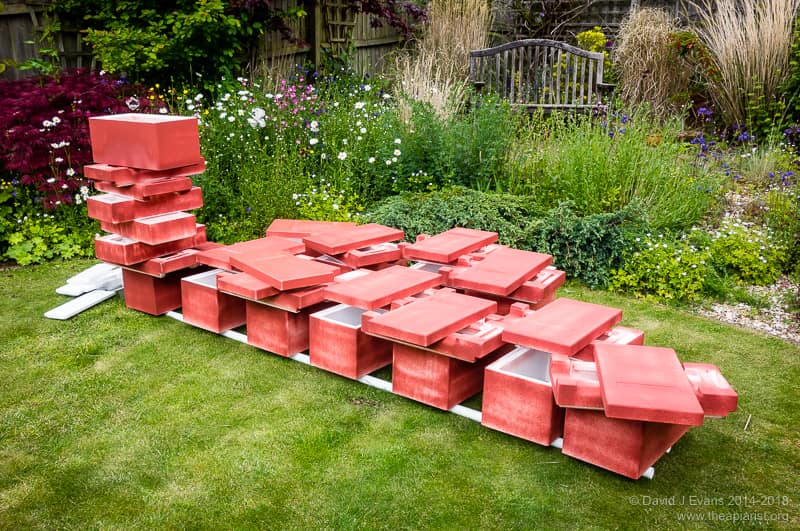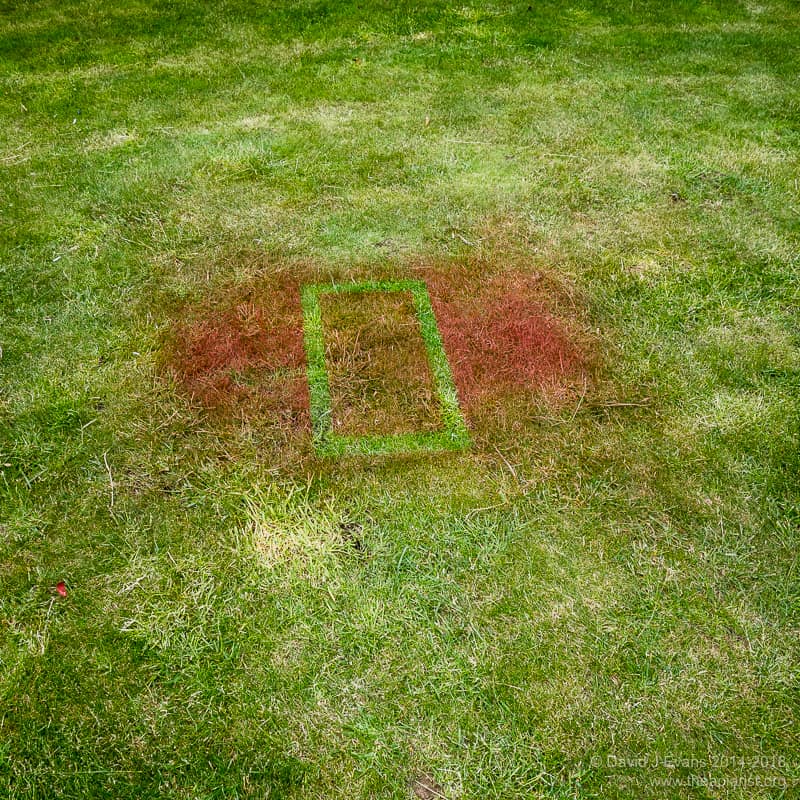Spray painting poly nucs
It’s recommended that poly nucs are painted before use as polystyrene degrades in sunlight. I’ve always used the cheapest masonry paint I can find – being water-based there’s no danger of damaging the polystyrene, it goes on reasonably well and is pretty hard wearing. The range of colours – in the inexpensive ranges at least – is a bit limited … white, a variety of cream or ivory shades, brick red or black. I’ve always used the brick red (though the bees would see this as black of course) from Wilkinsons, but would really prefer a leaf or dark green colour to help make the hives unobtrusive.

Black & Decker HVLP200
The paint tends to a be a bit thick out of the pot, so I usually water it down by about 25% and apply a couple of coats. The Thorne’s Everynucs or Paynes boxes are easy to paint with a brush as all the surfaces are flat. The Modern Beekeeping poly Langstroth nucs are a different matter altogether – the ‘branding’ and handles moulded into every face make painting them a real pain.

First coat done …
However, painting a large number of any of these boxes quickly becomes a tedious task. With 18 new Everynucs to paint I bought a Black and Decker HVLP (high volume low pressure) spray gun in the sales. These come with a small funnel-like contraption to measure the viscosity of the paint. Out of the tin the masonry paint I’ve got was far too thick and gloopy, but with enough water and lots of stirring I readily achieved the right consistency. After that the painting was a doddle. In two hours – as two one hour stints – I painted a dozen Everynucs with two coats. A few areas were a bit patchy as I got the hang of the paint gun. These paint guns are essentially strong hairdryers so there are few moving parts – the nozzles and paint reservoir are easily rinsed out and cleaning probably took no more than 10 minutes.
I usually paint my cedar hives with Ronseal Fence Life in a ‘forest green’ colour – this is much thinner paint and will probably be usable without dilution. It’s not as hard wearing as the masonry paint and requires re-painting every few years. This spray gun will make this a trivial task and it should be possible to stack them head-high and paint all four sides very quickly. All of this painting needs to be done outdoors on a calm day as there’s quite a bit of overspray from this type of paint gun … there speaks the voice of experience 😉

D’oh …
Join the discussion ...